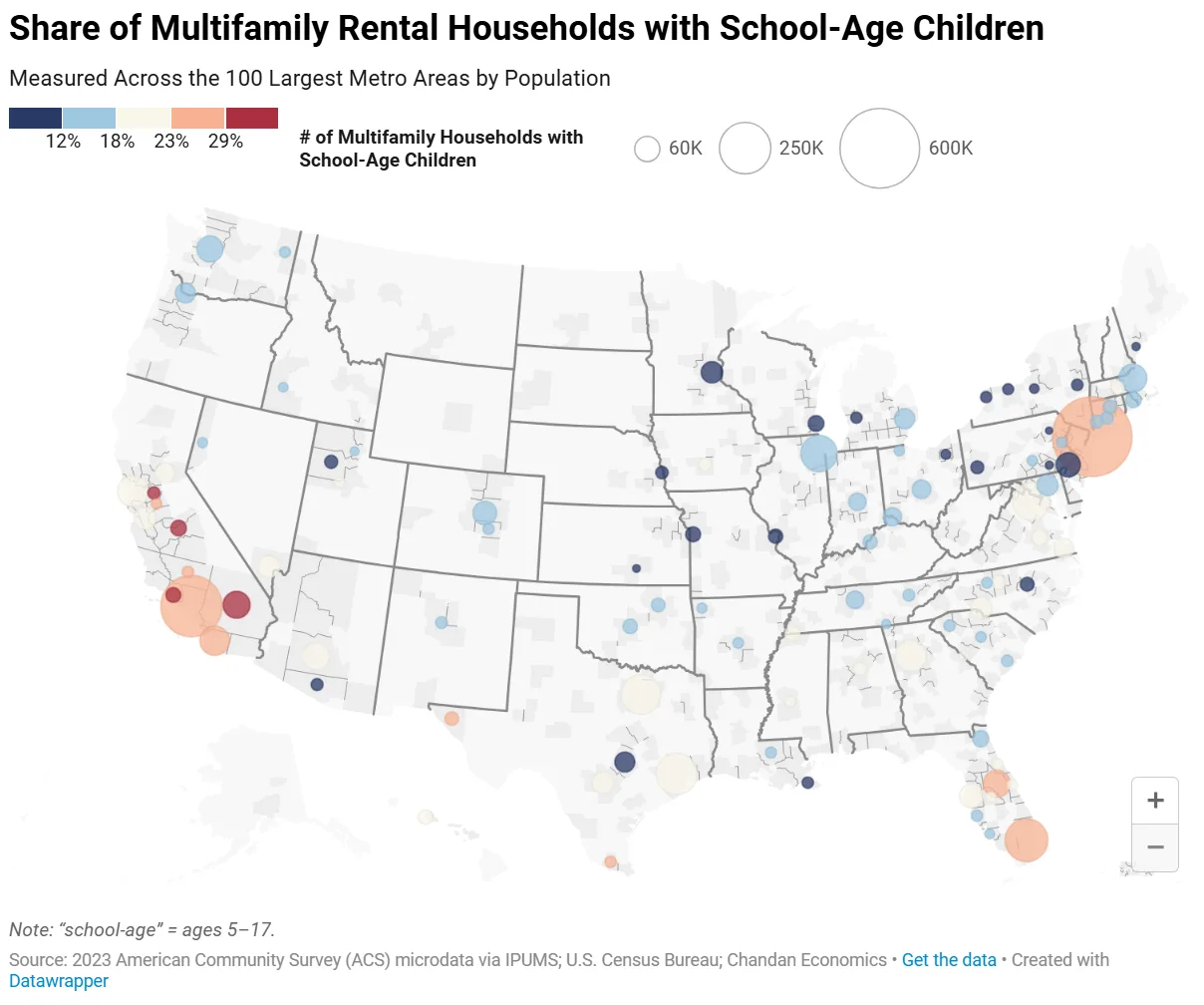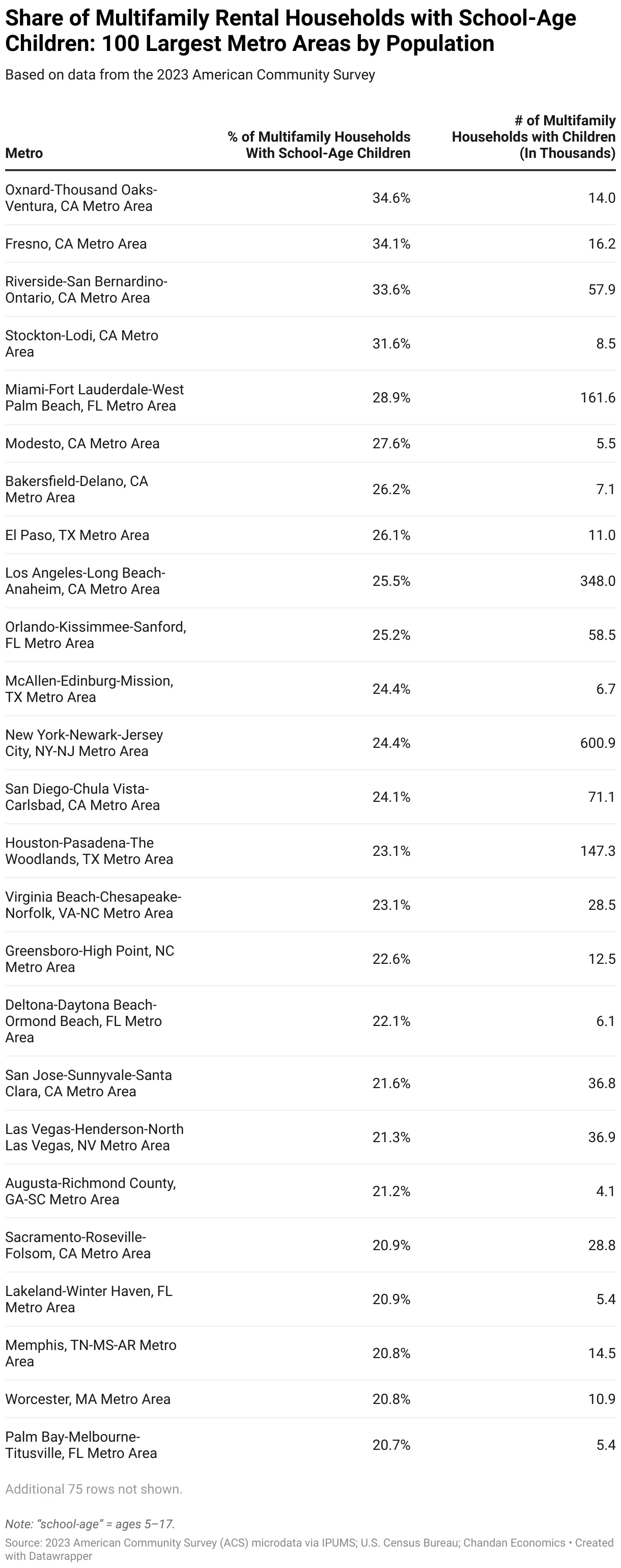- Nearly one in five multifamily renter households (18.3%) includes a school-age child, showing apartments house more than just singles and young couples.
- California metros dominate the top of the list, with Oxnard (34.6%) and Fresno (34.1%) leading.
- Affordable markets like Wichita, Scranton, and Pittsburgh show the lowest shares, as families there often opt for single-family homes.
A Different Renter Profile
Chandan Economics reports that one in three US households (33.3%) has a school-age child. Apartments are part of that mix. According to the 2023 American Community Survey, almost 4M multifamily households include children ages 5–17. That total equals nearly one in five multifamily renter households nationwide.
Where Kids Are Most Common in Multifamily
California leads the way. Among the 100 largest US metros, Oxnard, CA, has the highest share of multifamily households with school-age children at 34.6%. Fresno (34.1%), Riverside (33.6%), and Stockton (31.6%) follow closely. In fact, seven of the top nine metros are in California.
Why does the state stand out? Affordability pressures are one reason. California remains one of the most expensive housing markets in the country. In addition, the type of development matters. Markets like Riverside and Modesto have built many garden-style and low-rise communities. Because these offer larger layouts, they often appeal to families who need more space at a lower cost.

Where Families Are Less Likely to Rent Multifamily
At the other end of the spectrum is Wichita, KS, where only 6.7% of multifamily households have school-age children. That is the lowest share nationwide. One explanation is affordability. Zillow reports that rents in Wichita are 44% below the national average, making single-family homes more attainable.
The rest of the bottom five includes Scranton (8.2%), Pittsburgh (8.5%), St. Louis (9.6%), and Kansas City (9.9%). These metros also post rents below the national average. Moreover, zoning plays a role. Multifamily properties in these markets are often located in dense downtown cores, not in family-oriented suburban areas. As a result, fewer families rely on apartments for affordability.
Get Smarter about what matters in CRE
Stay ahead of trends in commercial real estate with CRE Daily – the free newsletter delivering everything you need to start your day in just 5-minutes
Why It Matters
These data show that multifamily housing serves a broad mix of households. Families with children account for a meaningful share of renters in many markets. Therefore, owners and operators should track how their tenant base compares with local trends. By doing so, they can tailor amenities, community design, and leasing strategies to fit demand.



















